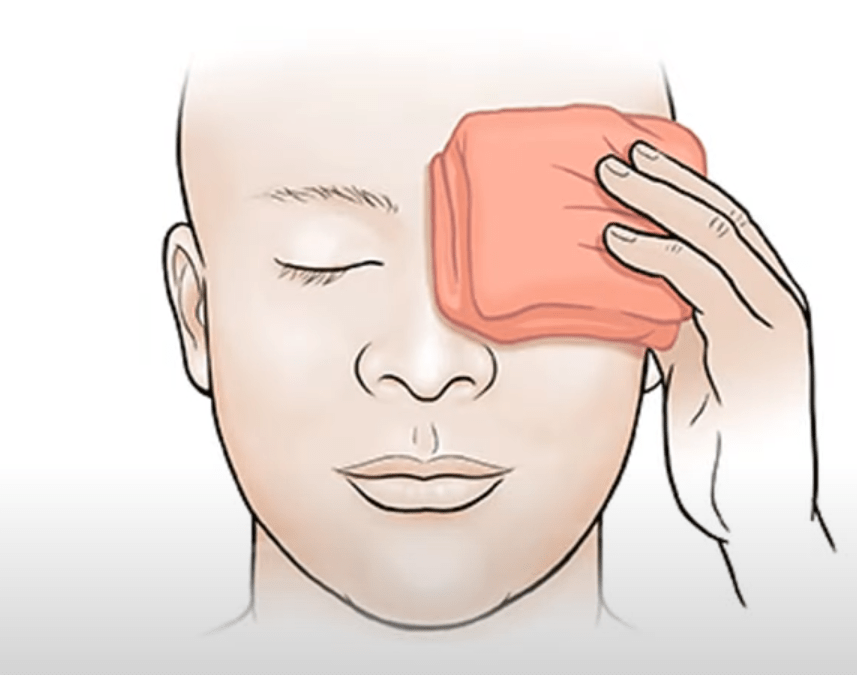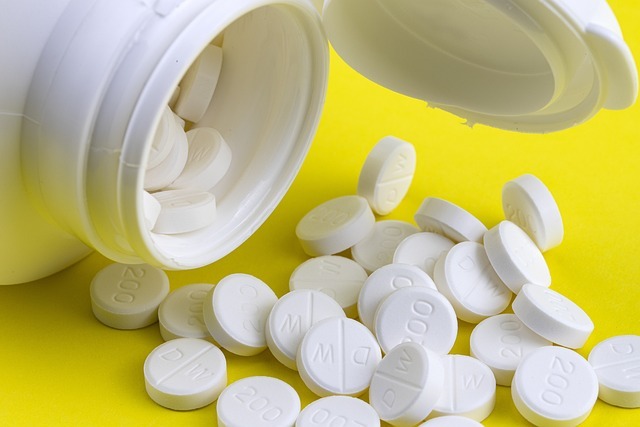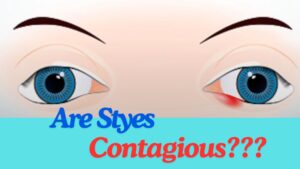If you’re wondering how to get rid of a stye fast, you’re not alone. Styes are a common yet uncomfortable eye condition that many people experience at least once. This blog post is designed to guide you through everything from understanding the causes of a stye to effective treatment and prevention methods. By implementing the right care strategies and knowing when to seek professional help, you can alleviate symptoms quickly and prevent future occurrences. Read on to learn practical tips and best practices for managing this pesky eye issue.
What Causes a Stye? Understanding the Basics
A stye, also known as a hordeolum, is a common eye condition that appears as a painful, red bump near the edge of the eyelid. It can resemble a pimple and can cause considerable discomfort and irritation. To understand how to get rid of a stye fast, it’s essential first to comprehend what triggers its formation.
For more information on what is stye, click HERE.
Bacterial Infection: The Primary Culprit
The main cause of a stye is a bacterial infection in the oil glands or hair follicles of the eyelid. The most common bacteria involved is Staphylococcus aureus. These bacteria can enter the gland through small breaks in the skin or at the base of the eyelash. Once inside, they can multiply rapidly, leading to inflammation and the formation of pus-filled swellings.
Risk Factors Enhancing Stye Development
Several factors can increase your risk of developing a stye:
- Poor Eyelid Hygiene: Not removing eye makeup thoroughly, using expired cosmetics, or frequently touching the eyes with unclean hands can introduce bacteria to the eyelids.
- Chronic Blepharitis: This long-term inflammation of the eyelids can make individuals more susceptible to styes.
- Stress and Hormonal Changes: These can affect the body’s immune response, making it easier for infections to take hold.
- Existing Skin Conditions: Conditions like acne or rosacea, which affect the skin’s oil glands, can also predispose individuals to styes.

Preventive Measures
Maintaining good eyelid hygiene is paramount. Regularly cleaning your eyelids with mild soap or shampoo can help remove oil and debris, which might otherwise clog glands and lead to styes. Additionally, avoiding the use of old or contaminated eye makeup can significantly reduce the risk.
By understanding these basic causes and risk factors, you are better equipped to prevent styes and address them quickly should they occur, helping to alleviate symptoms and speed up recovery effectively.
Immediate Steps to Alleviate Stye Symptoms
When dealing with the discomfort of a stye, there are several immediate steps you can take to manage the symptoms and encourage faster healing. Understanding how to get rid of a stye fast involves implementing simple yet effective remedies right at home.
Use a Warm Compress
The most recommended and effective treatment for a stye is applying a warm compress. Soak a clean cloth in warm (not hot) water, wring it out, and gently hold it against your closed eyelid for about 5 to 10 minutes. The warmth helps dissolve the pus and oil, allowing the stye to drain naturally. Repeat this process three to four times a day until the stye resolves.

Keep Your Eyelids Clean
Proper hygiene is crucial when you have a stye. Clean the affected eyelid gently with mild soap and warm water or use a saline solution. This helps prevent further bacterial accumulation and also removes debris that could block the healing process. Ensure your hands are clean before you touch your eyes to avoid introducing additional bacteria.
Avoid Makeup and Contact Lenses
While you have a stye, avoid wearing eye makeup and contact lenses. These can irritate your eye further and may delay healing. Makeup can also harbor bacteria, potentially leading to reinfection or worsening of the stye. Switch to wearing glasses temporarily until the stye fully heals.
Do Not Pop or Squeeze the Stye
It might be tempting to pop or squeeze a stye to get rid of it quickly, but this can spread the infection and cause more severe complications. Allow the stye to burst on its own. Popping it can also introduce bacteria deeper into the eyelid, potentially leading to a more serious infection.
Over-the-Counter Solutions and When to Use Them
For those seeking quick relief from stye symptoms, several over-the-counter (OTC) solutions can be effective. Knowing how to get rid of a stye fast includes understanding when and how to use these treatments safely.
Antibiotic Ointments
OTC antibiotic ointments can be applied directly to the eyelid to help fight the infection causing the stye. Products containing ingredients like bacitracin or polymyxin B are commonly recommended. Use a small amount on a clean fingertip or a cotton swab and gently apply it to the affected area, following the package instructions. It’s important to use these products specifically designed for eye use to avoid irritation.
Pain Relievers
If a stye is particularly painful, you can take OTC pain relievers such as ibuprofen or acetaminophen. These medications can help reduce the pain and swelling associated with a stye. Always adhere to the dosage recommendations provided on the packaging to avoid any potential side effects.

Lubricating Eye Drops
Although they do not treat the stye directly, lubricating eye drops, also known as artificial tears, can help soothe the irritation and dryness caused by a stye. These can be particularly beneficial if you experience discomfort or scratchiness from the stye.
When to Use OTC Treatments
OTC treatments are most effective when used at the first sign of a stye. Early intervention can help manage symptoms and may reduce the duration of the infection. However, if symptoms persist or worsen after a few days of self-care, it may be necessary to consult a healthcare professional.
Utilizing these OTC solutions can significantly aid in managing stye symptoms and speeding up recovery. However, it’s crucial to use them correctly and watch for any signs that might indicate the need for professional medical attention. This information provides a straightforward guide to selecting and using over-the-counter treatments, ensuring safety and efficacy in managing stye symptoms.
Preventing Future Styes: Tips and Best Practices
Once you’ve dealt with a stye, the next step is to focus on prevention. Understanding how to get rid of a stye fast also includes knowing how to reduce the likelihood of future occurrences. Here are effective strategies and best practices to help keep your eyes healthy and stye-free.
Maintain Good Eyelid Hygiene
Regular cleaning of your eyelids can prevent the build-up of bacteria that can lead to styes. Use a gentle, tear-free baby shampoo or a special eyelid cleanser diluted with warm water. Apply the solution with a clean cotton ball or washcloth, gently wiping your eyelids to remove debris and excess oils.
Use Proper Makeup Hygiene
If you wear makeup, ensure you apply it with clean brushes and replace it regularly—especially eye products like mascara and eyeliner, which should be replaced every three months. Never share your makeup with others as this can spread bacteria.
Manage Existing Eye Conditions
Conditions like blepharitis, which involves inflammation of the eyelids, should be managed properly as they can increase the risk of styes. Regularly consult with an eye care professional to ensure any underlying conditions are adequately controlled.
Upgrade Your Diet
A healthy diet can support your immune system and prevent infections. Include plenty of fruits, vegetables, and omega-3 fatty acids in your diet to boost your overall health and reduce the likelihood of styes.

Be Mindful of Contact Lens Hygiene
For contact lens wearers, it’s crucial to follow all recommended guidelines for lens care, including hand washing before handling lenses and using proper lens cleaning solutions. Avoid wearing contact lenses while you have a stye.
By adhering to these preventative measures, you can significantly reduce the risk of developing styes. This guidance not only helps manage immediate symptoms but also promotes long-term eye health and hygiene.
When to See a Doctor: Recognizing Serious Cases
While most styes are harmless and can be treated at home, there are situations where medical intervention is necessary. Knowing how to get rid of a stye fast includes recognizing when your symptoms may indicate a more serious issue that requires professional medical attention.
Persistent Symptoms
If your stye does not start to improve after 48 hours of home treatment, or if it hasn’t completely resolved within a week or two, it’s important to consult a healthcare provider. Persistent styes may require prescription medication, such as antibiotic eye drops or ointments.
Recurrent Styes
If you frequently develop styes, this might be a sign of an underlying condition that needs to be addressed by a doctor. Recurrent styes can sometimes indicate a more serious infection or a chronic eyelid inflammation condition like blepharitis.
Increasing Pain or Swelling
If the pain worsens or the swelling spreads to other parts of the eye or face, you should see a doctor immediately. These symptoms can indicate the infection is spreading, which could lead to more serious complications if not treated promptly.
Vision Impairment
Any change in vision or sensitivity to light associated with a stye is a clear signal to seek professional medical advice. Vision changes can be a sign of deeper infections or complications that require immediate attention.
Signs of a More Serious Infection
Symptoms like fever, chills, or excessive swelling or redness around the eyes are warning signs of a more serious infection. If these symptoms are present, it’s crucial to consult a healthcare provider without delay to receive the appropriate treatment.
Understanding these signs will not only help you know how to get rid of a stye fast but also when it’s time to seek professional help to prevent complications and ensure proper eye health.
Conclusion
Dealing with a stye can be uncomfortable and inconvenient, but with the right knowledge and actions, you can effectively manage and prevent this common eye condition. By following the immediate steps to alleviate symptoms, using over-the-counter solutions wisely, and maintaining good eye hygiene, most styes can be managed safely at home. However, it’s crucial to recognize when a stye or its symptoms warrant professional medical attention. Always consult with a healthcare provider if your stye persists, worsens, or is accompanied by severe symptoms.
Remember, the key to eye health is prevention. Regular care, proper hygiene, and being attentive to the needs of your eyes can go a long way in preventing styes and other eye-related issues. If you find yourself frequently dealing with styes, consider revisiting your hygiene habits and perhaps consult an eye care professional for further guidance.
By staying informed and proactive about your eye health, you can minimize the impact of styes and keep your eyes healthy and comfortable.
Summary Table
Below is a summary table for the blog post, organizing the key points into a structured format:
| Sr No. | Point’s Name | Brief Description |
|---|---|---|
| 1 | Introduction | Overview of styes and the importance of understanding and treating them promptly. |
| 2 | What Causes a Stye? Understanding the Basics | Explains the bacterial origin of styes and factors that increase the risk of developing them. |
| 3 | Immediate Steps to Alleviate Stye Symptoms | Describes initial remedies like warm compresses and maintaining eyelid hygiene to reduce symptoms. |
| 4 | Over-the-Counter Solutions and When to Use Them | Discusses effective OTC treatments like antibiotic ointments and pain relievers for managing stye pain. |
| 5 | Preventing Future Styes: Tips and Best Practices | Provides tips on eyelid hygiene, makeup use, and diet to prevent future styes. |
| 6 | When to See a Doctor: Recognizing Serious Cases | Highlights signs that indicate the need for professional medical attention to prevent complications. |
| 7 | Conclusion | Summarizes the importance of proper care, timely treatment, and when to seek professional help. |
This table captures the essence of each section of the blog post, providing a quick reference for readers on managing and preventing styes.
FAQs
What is a stye and why do they occur?
A stye is a painful, red bump that forms on the edge of the eyelid, typically caused by a bacterial infection in the oil glands or hair follicles. Factors like poor eyelid hygiene, expired makeup, and certain chronic conditions can increase the risk of developing a stye.
How to get rid of a stye fast using home remedies?
The most effective home remedy for a stye is applying a warm compress to the affected eye for 5-10 minutes several times a day. This helps the stye drain naturally and reduces swelling and pain. Keeping the eyelid clean and avoiding makeup can also speed up the healing process.
Are there any over-the-counter (OTC) treatments for styes?
Yes, there are several OTC treatments that can help manage stye symptoms, including antibiotic ointments designed for eye use, pain relievers like ibuprofen or acetaminophen, and lubricating eye drops. These treatments can alleviate pain and prevent the infection from spreading.
When should I see a doctor for a stye?
You should consult a doctor if the stye does not improve after a couple of days of home treatment, if it recurs frequently, or if you experience severe symptoms like increased pain, swelling spreading to other parts of the face, vision impairment, or signs of a severe infection such as fever.
How can I prevent future styes?
Preventing future styes involves maintaining good eyelid hygiene, such as regularly cleaning your eyelids with mild soap or special cleansers, managing conditions like blepharitis, avoiding the use of old or contaminated makeup, and ensuring proper hygiene with contact lenses. Eating a healthy diet rich in vitamins can also support your immune system and help prevent infections.




Pingback: Are Styes Contagious? Expert Insights into Causes, Spread, and Effective Remedies - Digital Digest